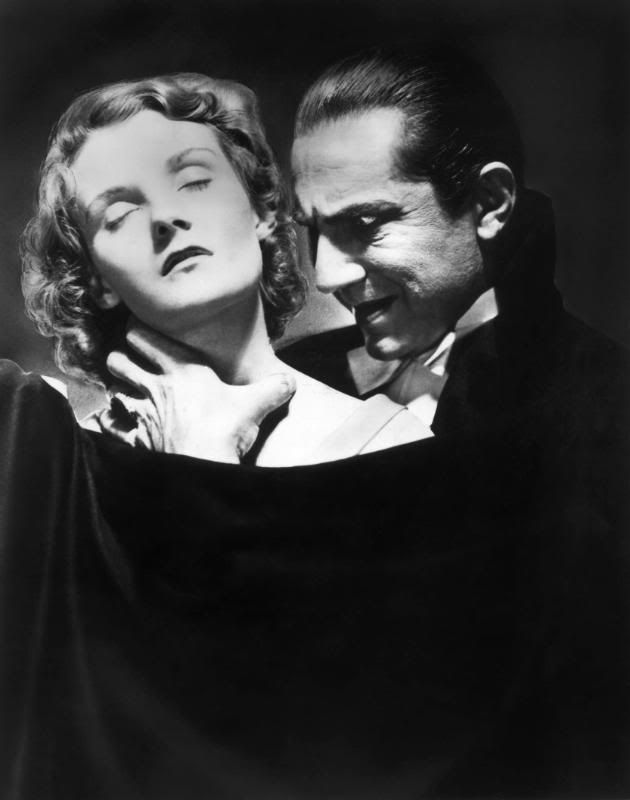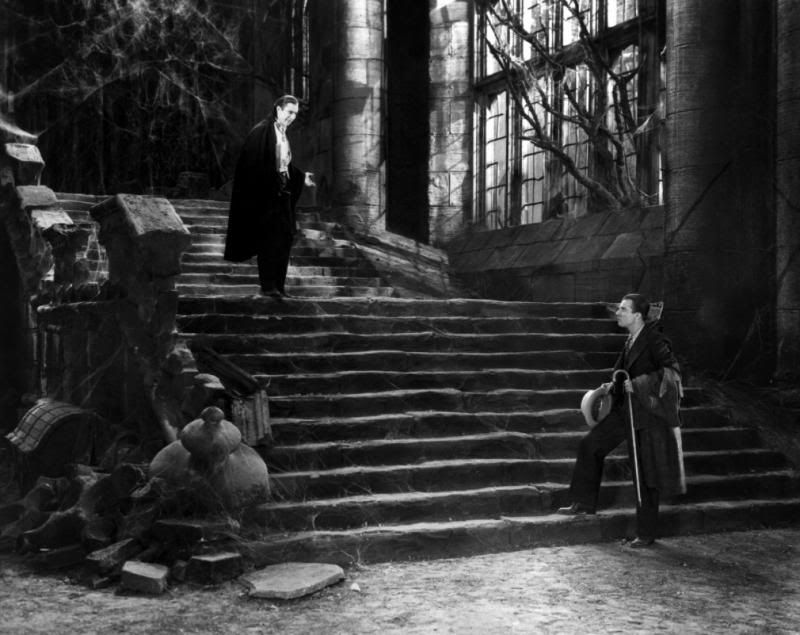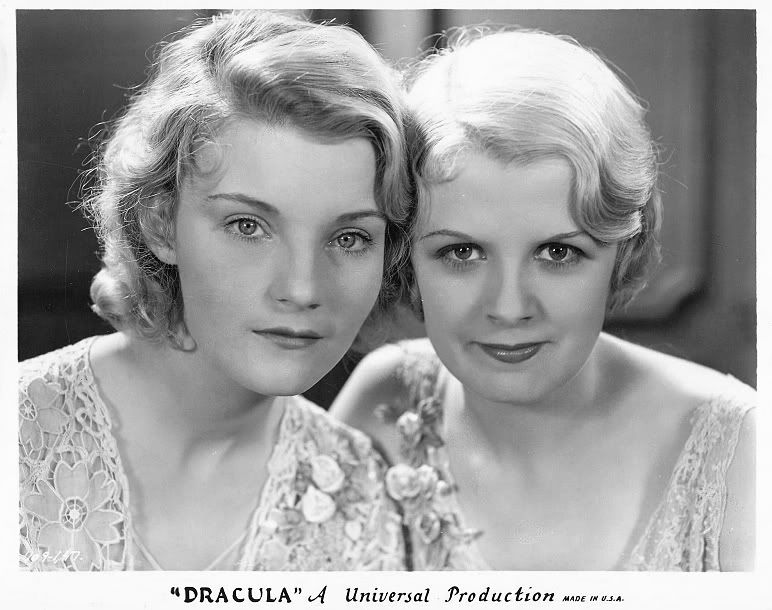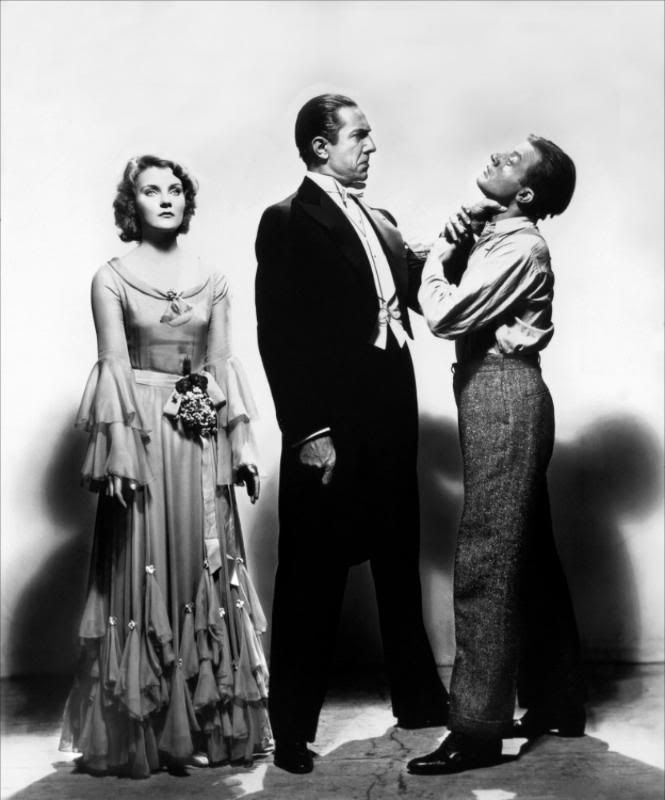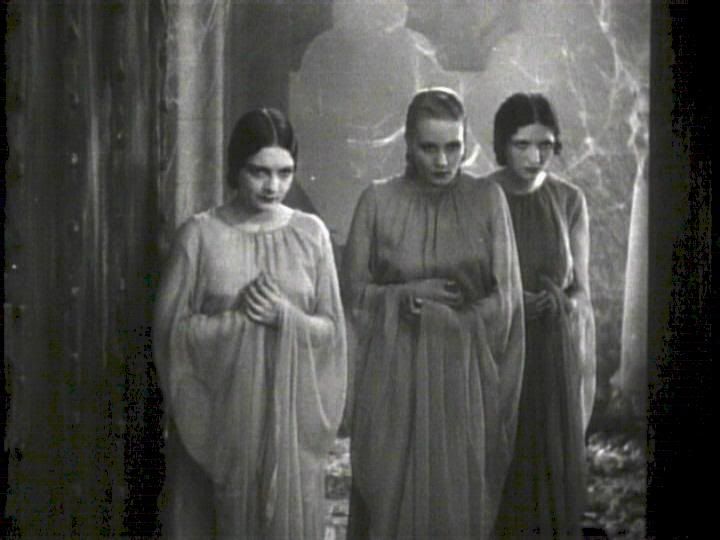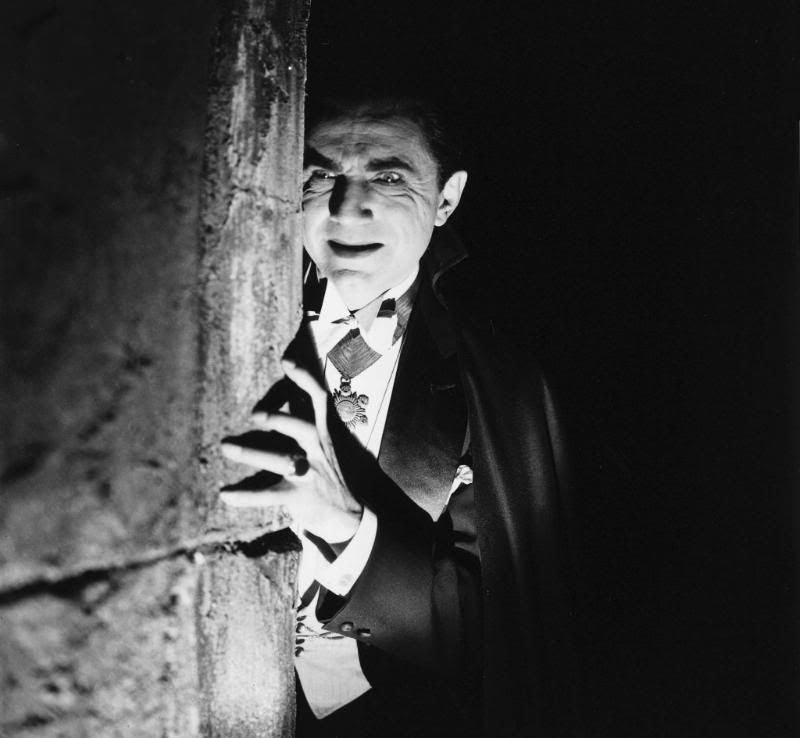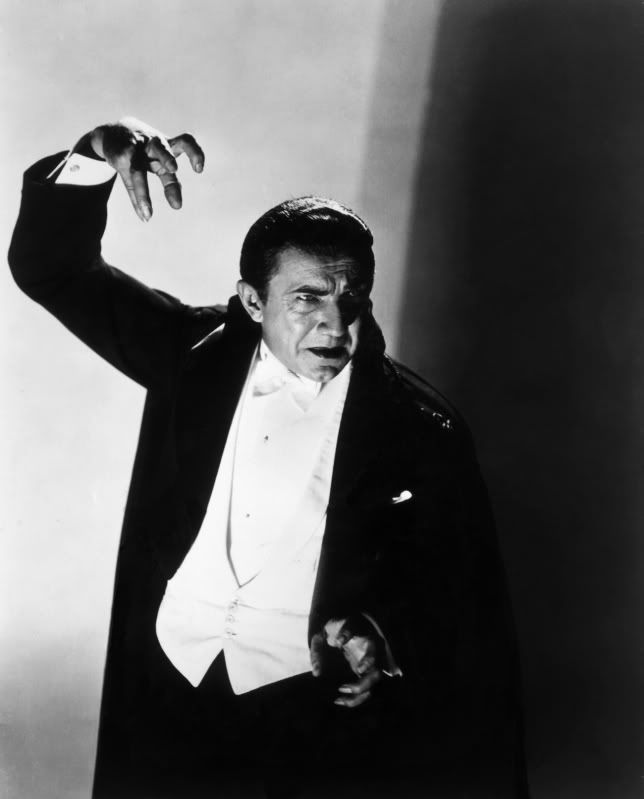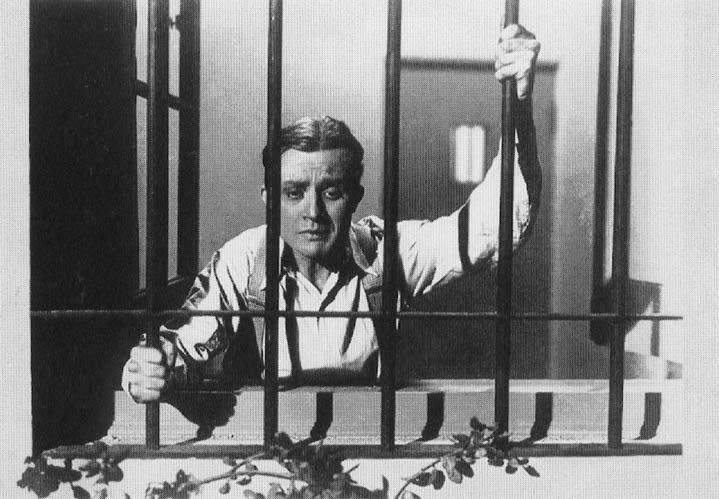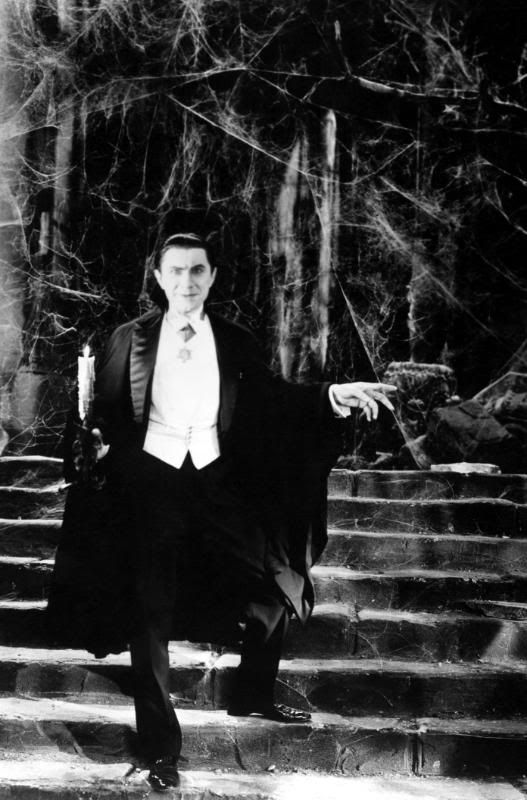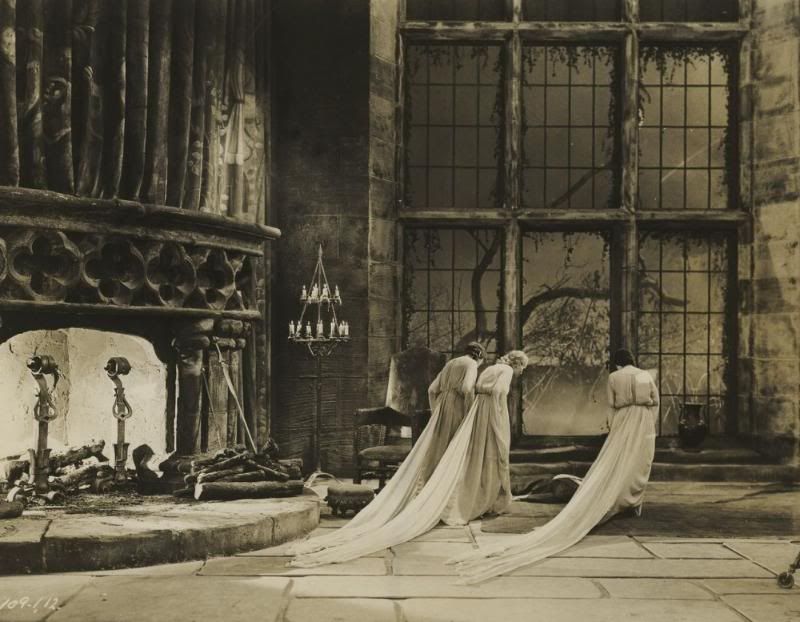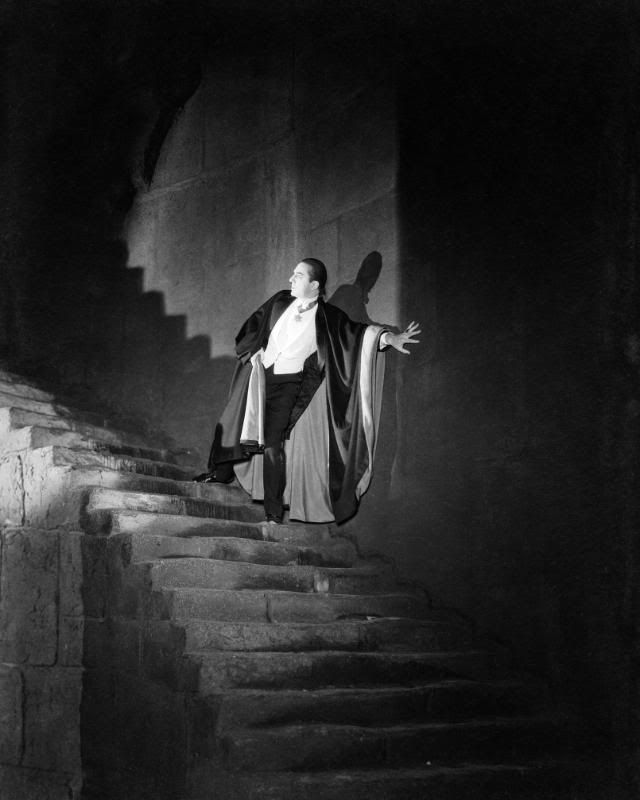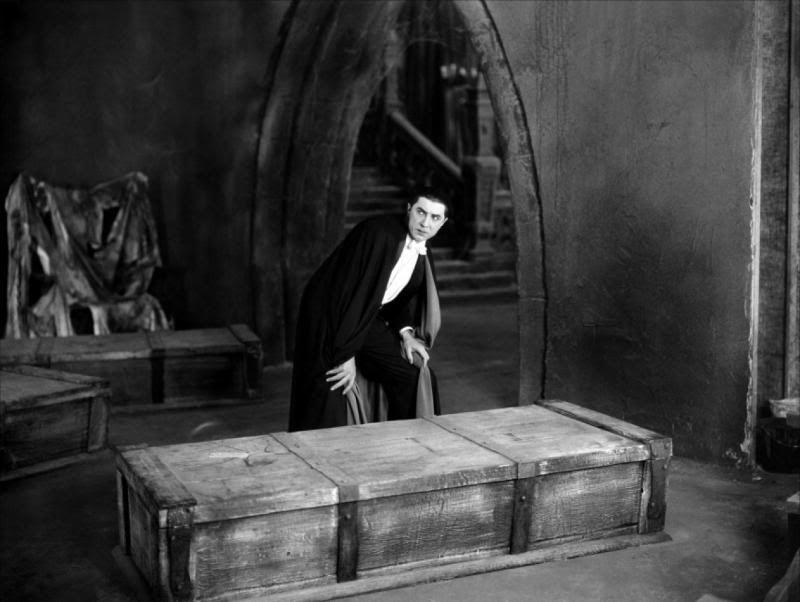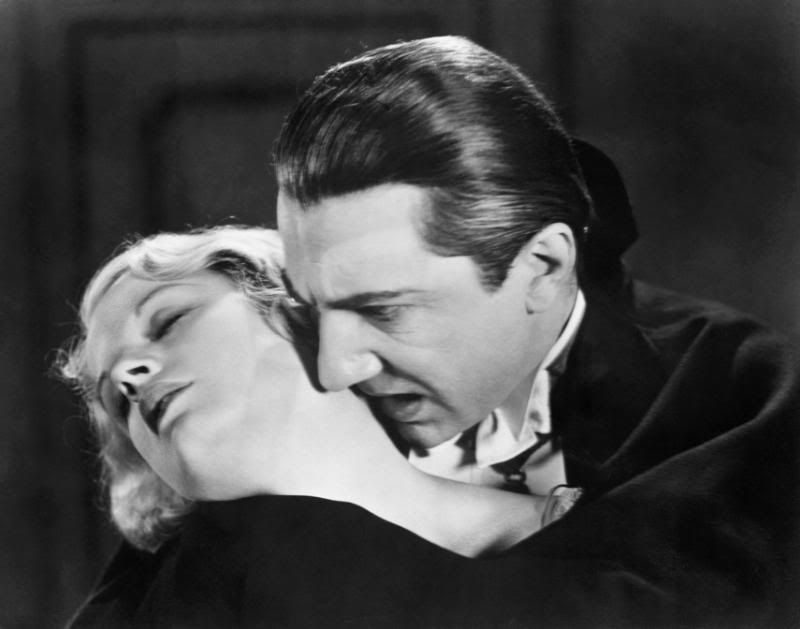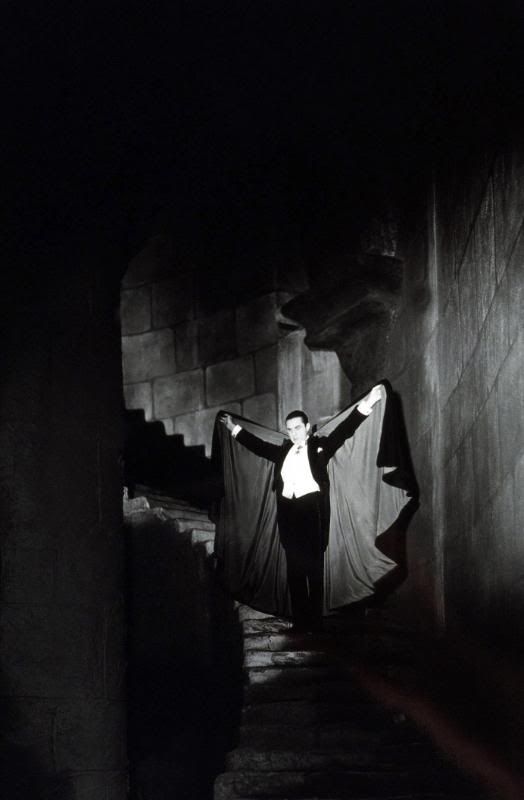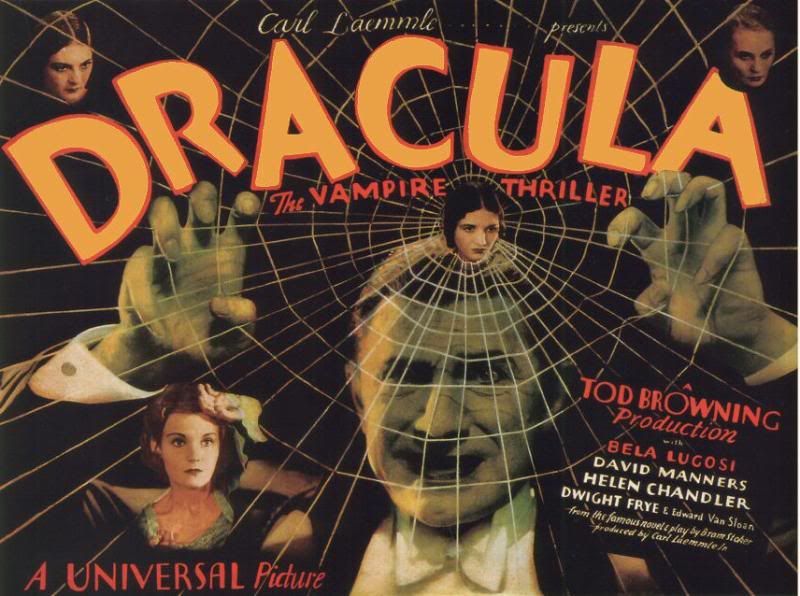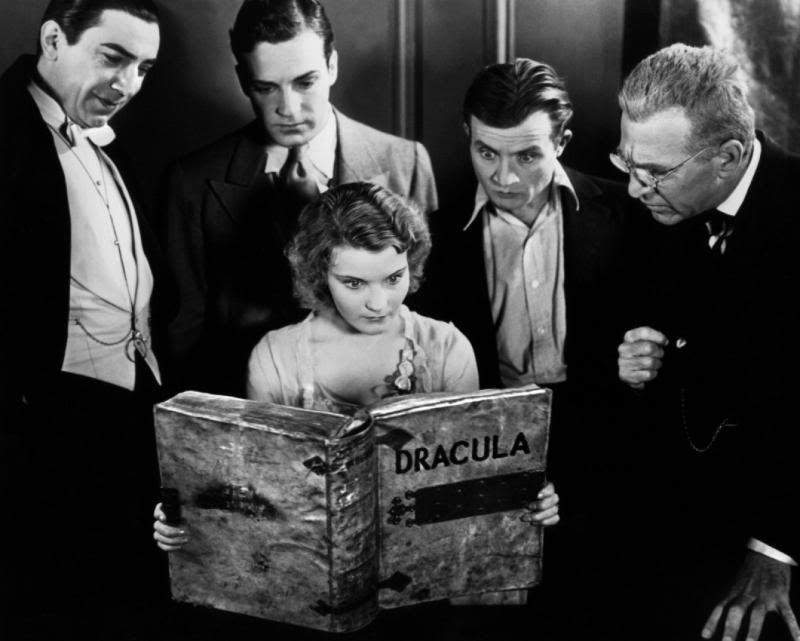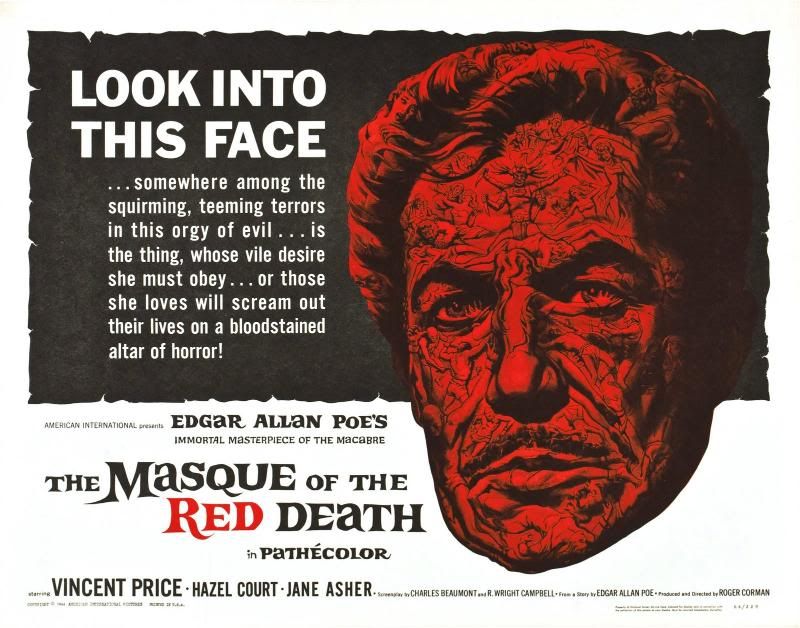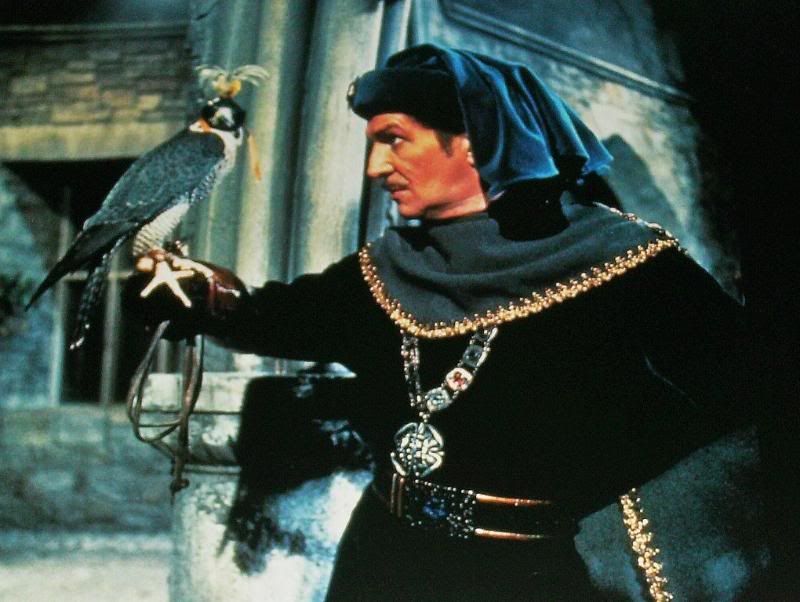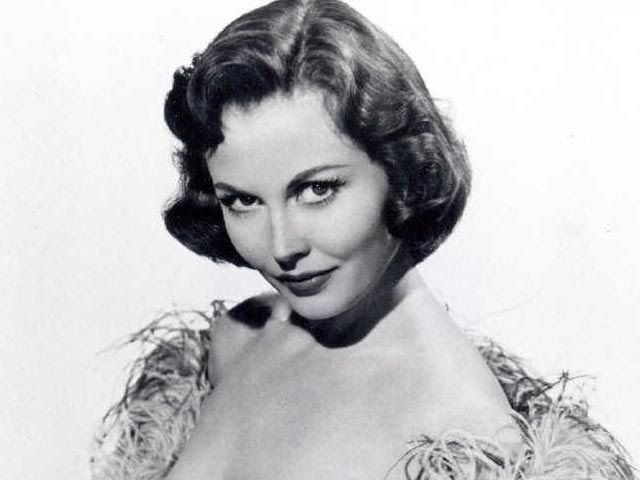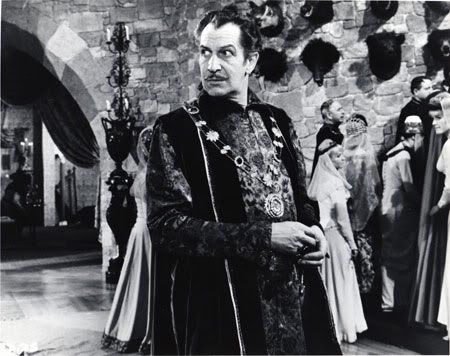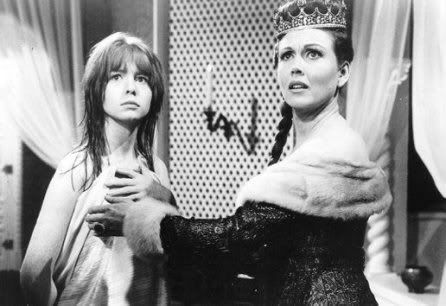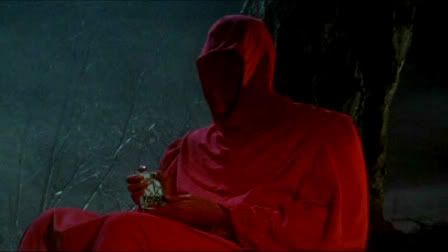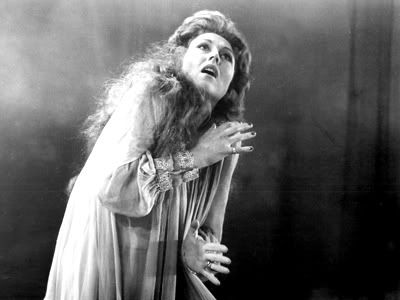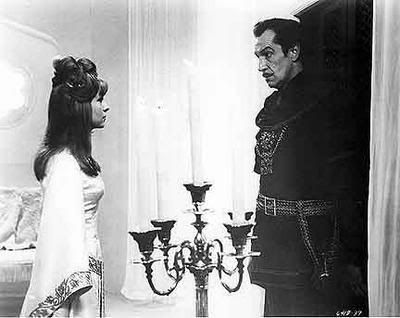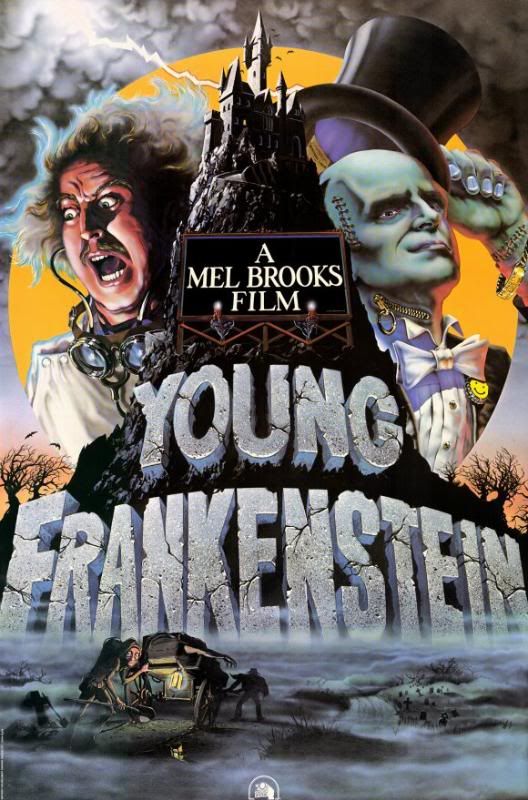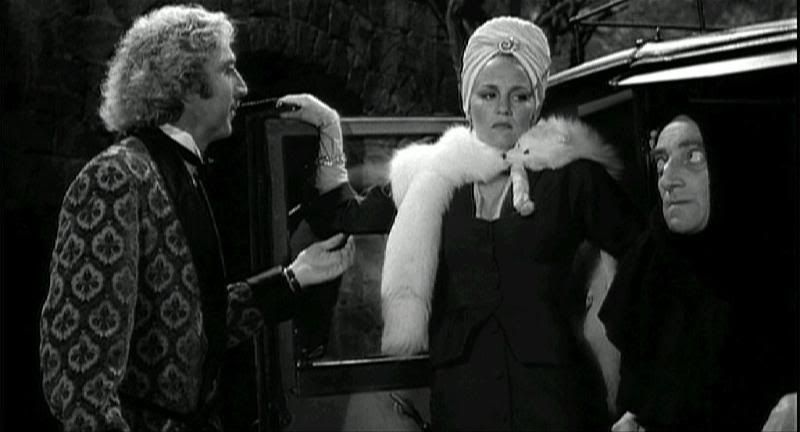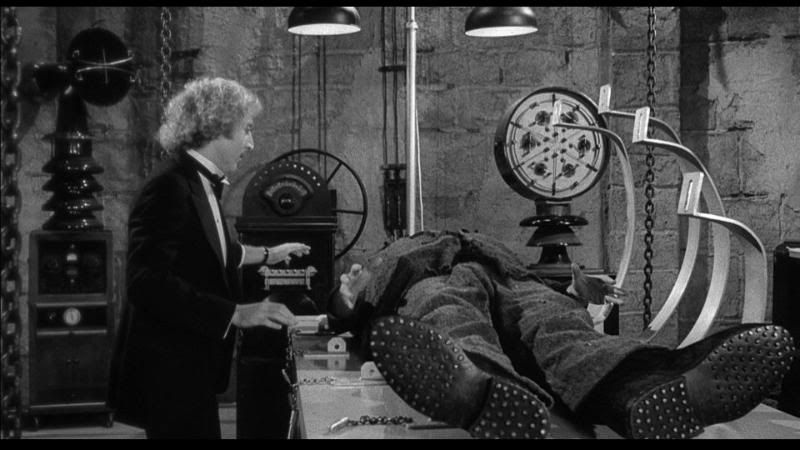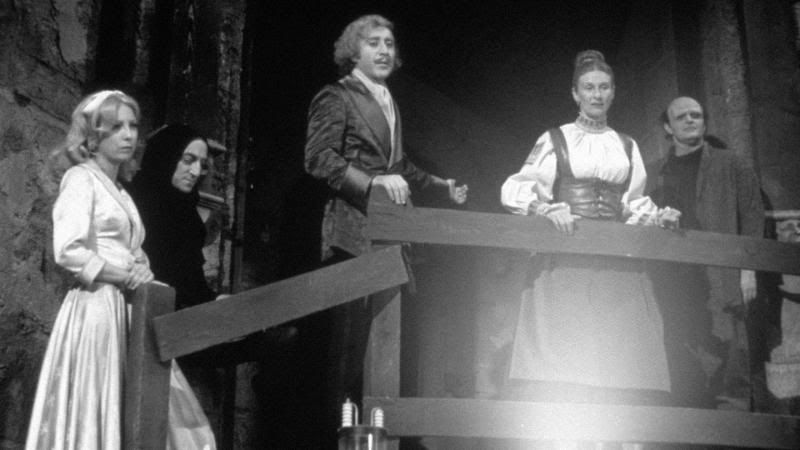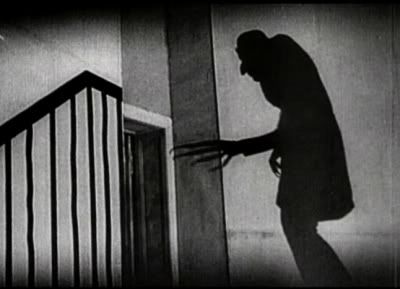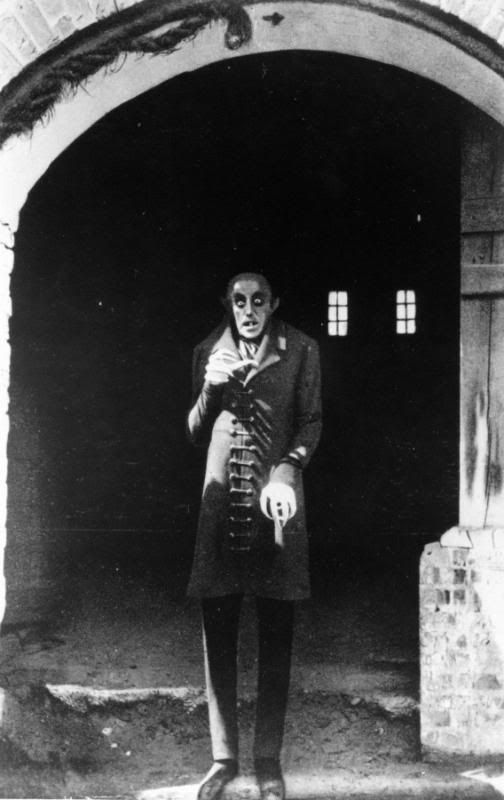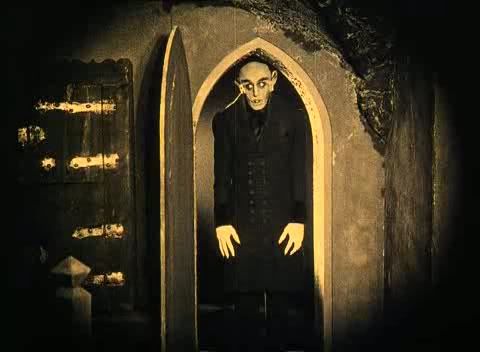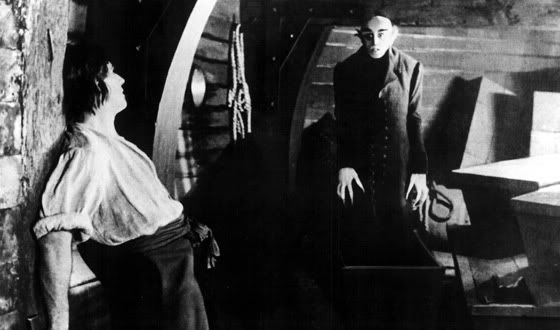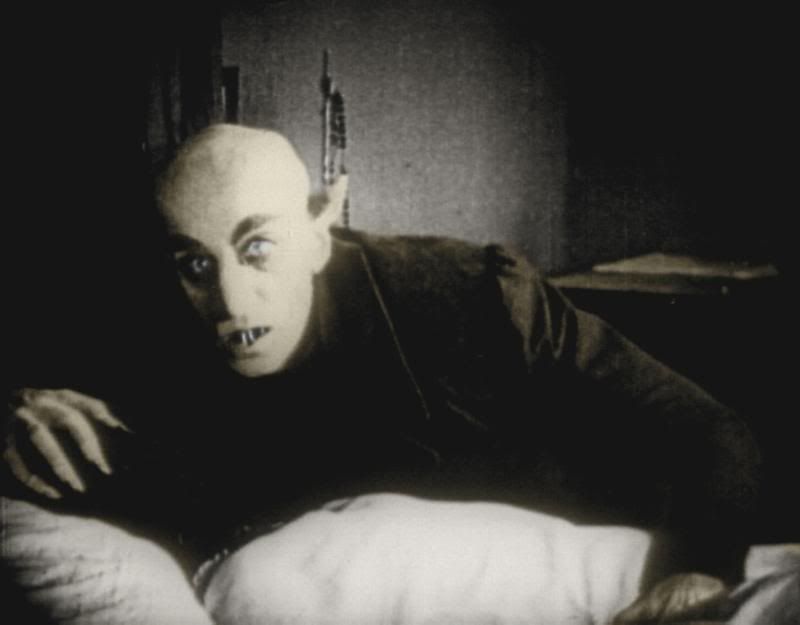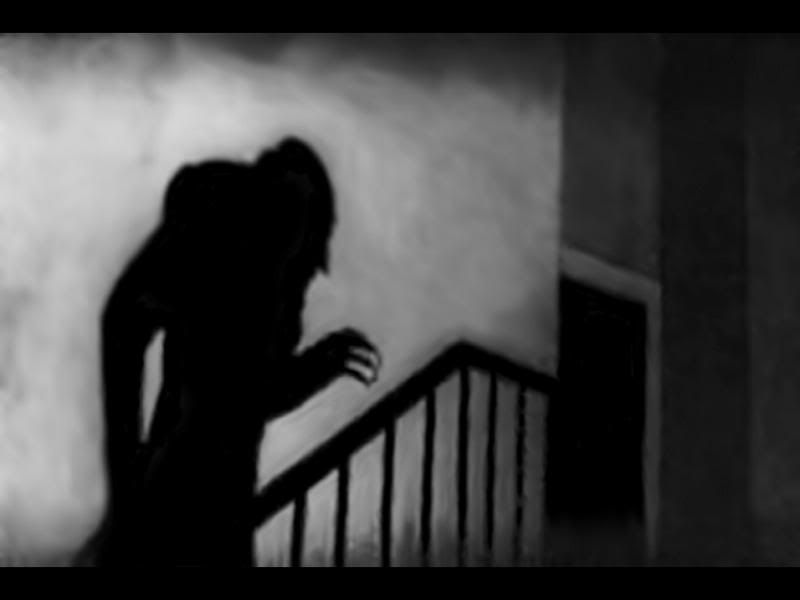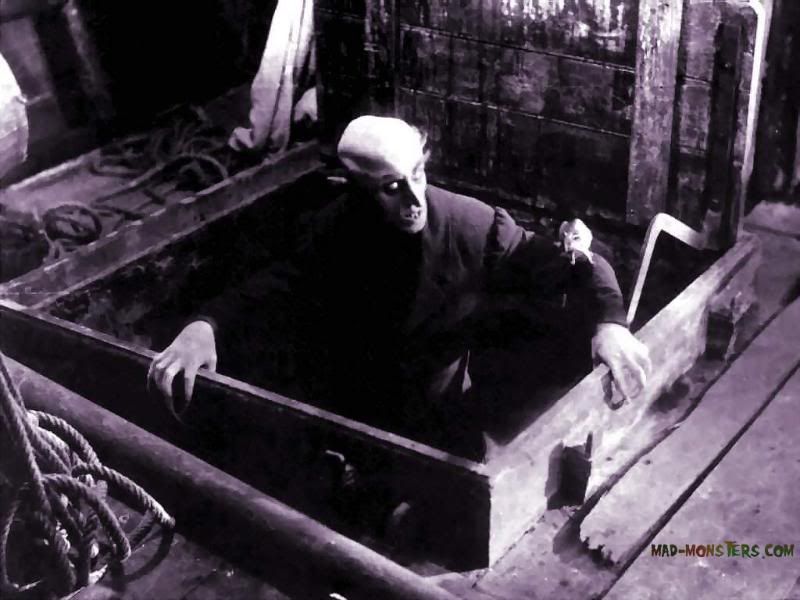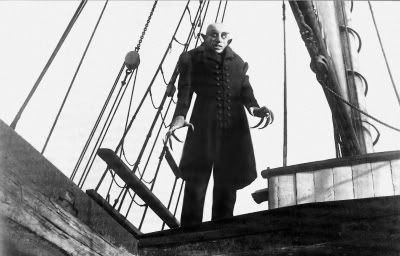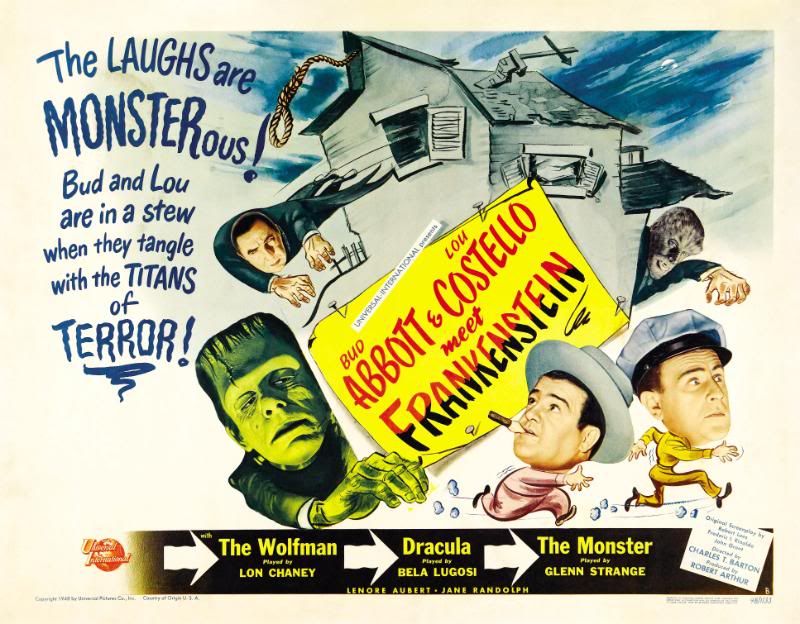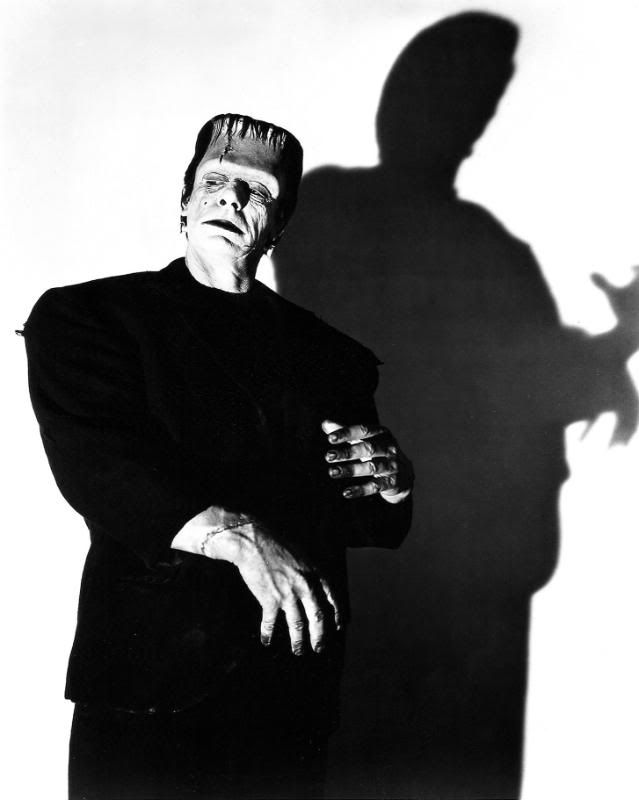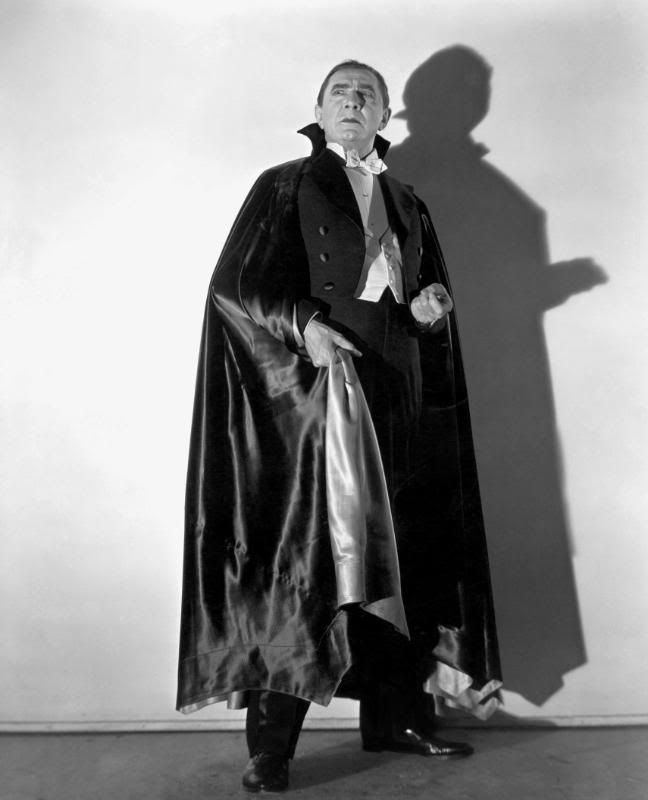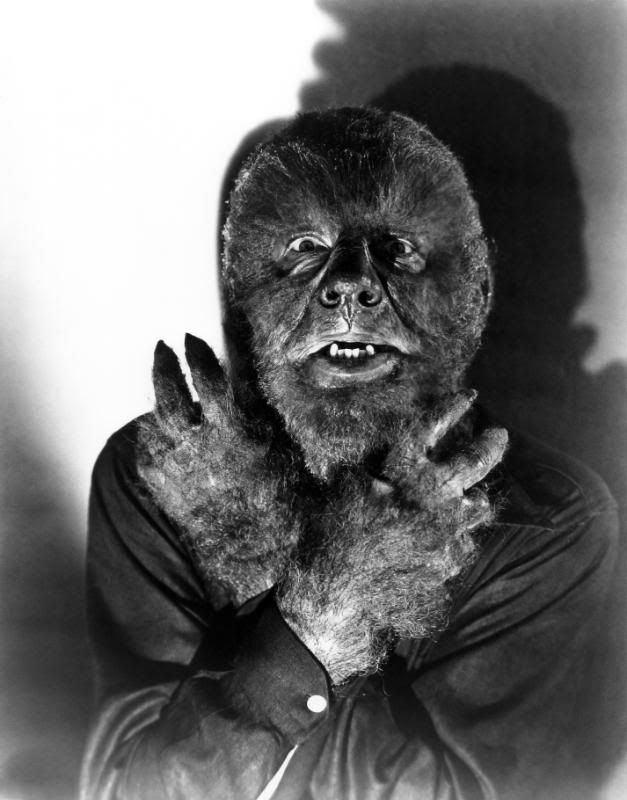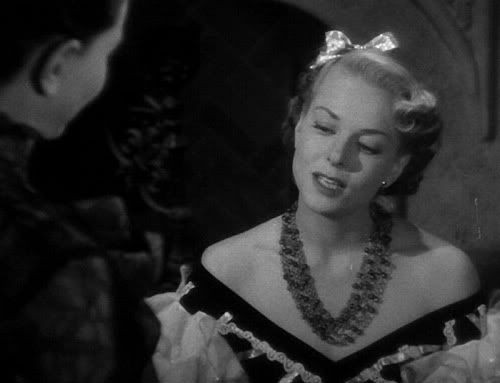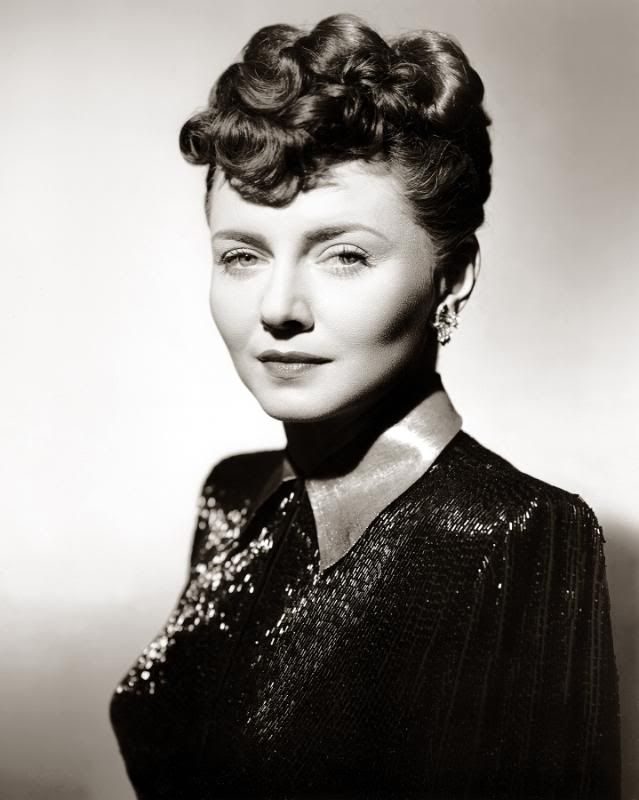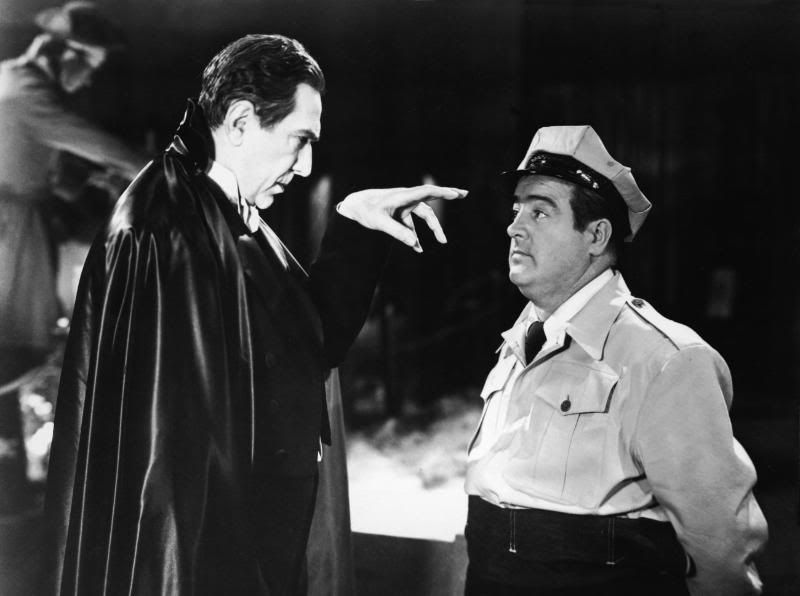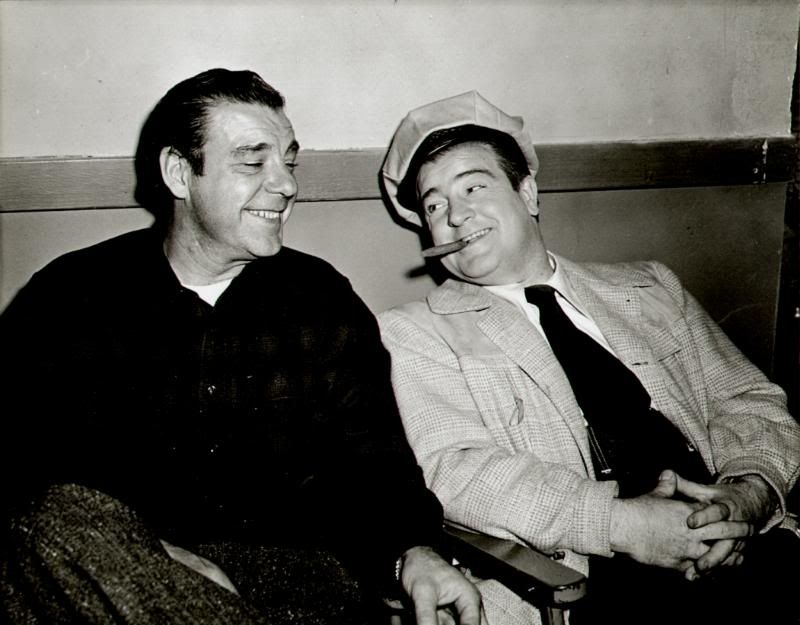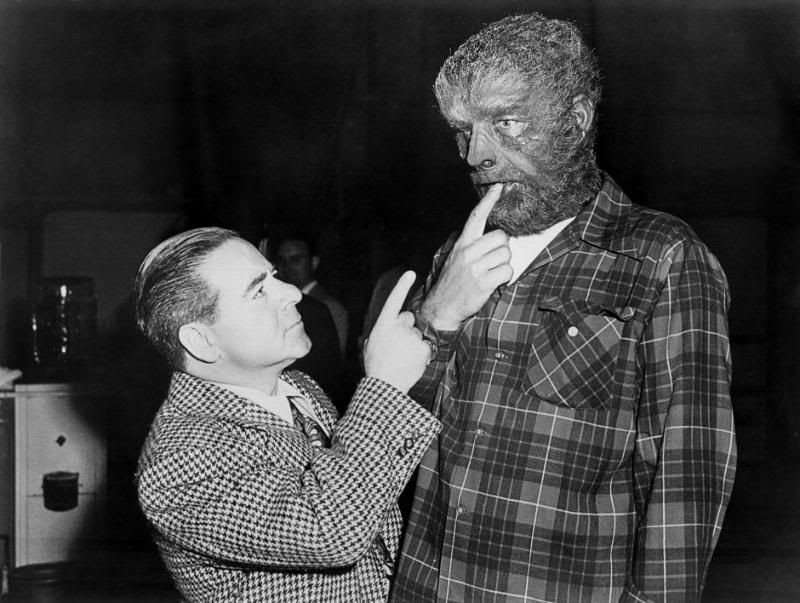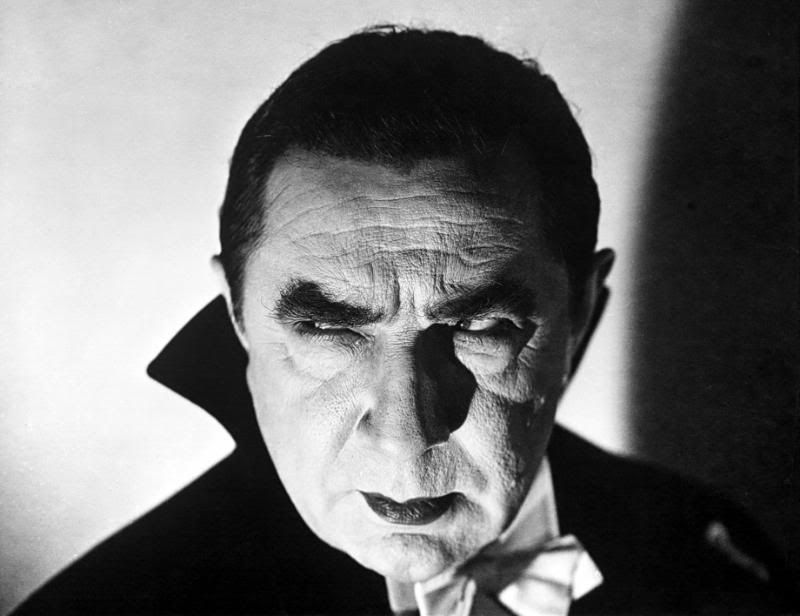Sunday, October 31, 2010
31 Days of Halloween Finale: Dracula (1931)
Today is Halloween, and what better way to end our month-long celebration than with a look at the film that kicked off the entire cycle of classic horror films in the 1930s? That's right, it's 1931's Dracula, starring the great Bela Lugosi, at the very peak of his abilities!
Solicitor Renfield(Dwight Frye) travels to Transylvania to meet with the wealthy and mysterious Count Dracula(Lugosi) to complete the sale of Carfax Abbey, a house in England. It soon becomes clear that there is far mor to the Count that Renfield ever could have suspected, and he quickly becomes Dracula's demented servant.
Dracula journeys to England via ship, with the cackling Renfield in tow. Destroying the entire crew by the time the ship arrives at its destination, Dracula wastes no time in ingratiating himself with the British upper class. He orchestrates an introduction to Dr. Seward(Herbert Bunston), his daughter Lucy(Frances Dade), her best friend Mina(Helen Chandler), and her fiance Jonathan Harker(David Manners).
Lucy is immediately fascinated with the exotic Count, and she becomes his primary target. Dr. Van Helsing(Edward Van Sloan) is called in to investigate her mysterious illness, and soon deduces that they are dealing with a vampire. Renfield, who has been confined in Seward's sanitarium, unwittingly confirms Van Helsing's suspicions, and he sets about identifying and destroying the undead monster.
As discussed last week, the first film adaptation of Bram Stoker's classic vampire novel was 1922's Nosferatu: A Symphony of Horror. Despite the controversy surrounding its illegal status, it was highly praised even then for its artistry. Universal acquired a print of the film, and drew a good deal of inspiration from it for their licensed adaptation of the Dracula story.
Director Tod Browning has been the subject of much criticism for his seemingly lackluster work on this seminal film-- indeed, for whatever reason, the directing in this film is hardly up to his usual standards-- but he helped put together a hell of a cast. Bela Lugosi, obviously, transcends any attempt at criticism in this film. His performance is the stuff of legend, a career-defining masterwork that ensures that he will never be forgotten. Nearly eighty years later, mention Dracula to anyone, and the image that leaps immediately to mind is that of Bela Lugosi. Lugosi's Dracula is quite possibly the single most iconic performance in the history of film.
Believe it or not, Universal didn't even want him. Lugosi was only cast seemingly because Universal could find no other suitable candidate after months of searching. Lugosi was paid a paltry $500 per week, while the seemingly comatose David Manners was paid four times that. This kicked off a nasty tradition of Lugosi being constantly underpaid and under-appreciated that would last the rest of his film career. Despite all that, Lugosi's work in this film bought him an immortality that the vast majority of actors can only dream of.
Dwight Frye gives the next most memorable performance in the film. His deranged, tortured performance of Renfield is one of the film's highlights. Edward Van Sloan is in fine form as Van Helsing, a template for the sort of characters he would be cast as in several films to follow.
The rest of the cast is mostly serviceable. Helen Chandler and Frances Dade are very nice to look at, but they aren't given much to work with. David Manners as Harker is basically a non-entity in the film, but it's not really his fault. The part is not written well(it's barely written at all!). For some reason, the Harker character always seems to come off pretty poorly in Dracula films, but I don't think he ever fared worse than in this one.
The sets are very nice overall, but the set for Castle Dracula is a show-stopper. It's a shame we don't get to see more of it. The wonderful Carfax Abbey set is woefully underutilized, as well(although we get to see more of it in the simultaneously-produced Spanish language version of the film).
Dracula is a flawed film. There are long stretches where little happens, and the many scenes feel very stage-bound. Despite the presence of Karl Freund, who pioneered the use of the moving camera in film, many scenes just seem to plant the camera and let it take root while we watch gray people talk incessantly. But that is only a small part of Dracula, and it has some of the biggest guns imaginable in its arsenal that make it worthy of its classic status despite its flaws. Whenever Lugosi is onscreen, the film comes alive, and the introductory scenes are among the best and most atmospheric in all the classic horror films. Spend 70 minutes of your Halloween with this classic, and endure through the few boring stretches. It's worth it. And to truly give yourself a fright, try to imagine a world where Dracula was never made. Film-- not to mention popular culture-- would be inconceivably poorer.
Saturday, October 30, 2010
31 Days of Halloween: The Masque of the Red Death
We revisit loose Poe adaptations today with producer/director Roger Corman's The Masque of the Red Death. This 1964 Vincent Price vehicle was filmed on the standing sets from Becket, the recently-completed film adaptation of the play of the same name. Hence, Masque has sets far beyond the usually meager Corman budgets would provide.
Prince Prospero(Price), an oppressive tyrant, holes up in his castle with dozens of friends and sycophants while the Red Death ravages the countryside. Peasant girl Francesca(Jane Asher), her lover Gino(David Weston), and her father Ludovico(Nigel Green) are drawn into Prospero's debauchery. As Prospero's schemes unfold, his mistress Juliana(Hazel Court), his "friend" Alfredo(Patrick Magee), and his jester Hop Toad(Skip Martin) all plot against him. Meanwhile, the mysterious Man In Red lurks behind the scenes...
Vincent Price brings a charming, oily menace to Prospero that no one else could have managed. Like Karloff, Price's villains often had a sympathetic side that allowed us to relate to them on some level. Prospero is vile and despicable through and through, an absolutely rotten bastard any way you look at him. It's nice to see Price really cut loose with a truly evil character.
The rest of the cast is competent, with a few standouts in the form of Hazel Court and Jane Asher. Asher reportedly brought her boyfriend Paul by the set, where he met Corman and some of the cast and crew. They were surprised when they discovered that Paul was part of an obscure rock group called the Beatles; perhaps a few of you hardcore music historians have heard of them.
The Masque of the Red Death is only one of eight Poe adaptations Corman was responsible for, and it's among the very best. These films represent the high point of Corman's filmmaking career in the minds of many people; for the most part, they've aged well, and remain entertaining on their own merits to this day. For fans of Vincent Price, The Masque of the Red Death displays the actor in one of his most satisfying villainous roles. Unfortunately, the film appears to be currently unavailable on DVD, aside from some overpriced secondhand copies. The film appears regularly on TV, though, so keep an eye out for it. It's worth the trouble.
Friday, October 29, 2010
31 Days of Halloween: Young Frankenstein
As I said in an entry earlier this month, the horror comedy is a very tricky thing. While there are several very good examples of the horror comedy done properly, as far as I'm concerned, it was perfected with Young Frankenstein.
Dr. Frederick Frankenstein(Gene Wilder) inherits the estate of his infamous family. Temporartily leaving his fiancee Elizabeth(Madeline Kahn) behind, he travels to Transylvania to move into the family castle. Encountering such memorable characters as the hunchback Igor(Marty Feldman), castle caretaker Frau Blucher(Cloris Leachman), lab assistant Inga(Teri Garr), and wooden-armed Inspector Kemp(Kenneth Mars), Frankenstein (pronounced "Fronk-en-steen") attempts to make his own monster(Peter Boyle), redeeming his family's name in the process.
That's a hell of a cast. They, along with director Mel Brooks, have very long and impressive resumes, and Young Frankenstein represents the finest work from everyone involved. The film is savagely funny, working on several different levels to provide plenty of laughs, no matter who is watching. Obviously, there are plenty of references to the classic Universal horror films. The basic plot is nearly identical to Son of Frankenstein, and several characters are direct parodies of characters from that film(most notably Mars' Inspector Kemp, with an accent that is so thick that even the other villagers can't understand him!).
The idea had its genesis in Wilder, who imagined another sequel to the Universal Frankenstein films. Rather than the standard sort of mad scientist fare, this descendant of the original Monster maker would be shamed of his family, and try to distance himself from them as much as possible. Wilder approached Brooks with the idea while they were working on Blazing Saddles, and the two collaborated on the script.
Columbia refused to allow Brooks to film in black and white, which he and Wilder agreed was essential to the project, so they went to 20th Century Fox. Brooks rented equipment from Kenneth Strickfaden, who had supplied the flashy lab equipment that quickly became the standard for horror films for decades, including the original Universal Frankenstein films. The excellent score by John Morris and beautiful cinematography by Gerald Hirschfeld give the film an appropriate look and feel that evokes the Universal classics, yet give the film its own identity as well.
Young Frankenstein is easily one of the best comedies ever made, and in the sub-genre of the horror comedy, it is without peer. It works equally well as an unofficial part of the Universal canon, with many references to those films that enable it to fit into that larger tapestry surprisingly well. You'll get even more from it if you've watched the first three Universal Frankenstein films, but it stands on its own quite well. While you're busy watching all manner of horrors this Halloween weekend, don't forget to make a little room for Young Frankenstein.
Thursday, October 28, 2010
31 Days of Halloween: Nosferatu: A Symphony of Horror
Few films are as respected and influential as 1921's Nosferatu. Directed in an eerie expressionist style by gifted German director F. W. Murnau, the film is the first time Bram Stoker's novel Dracula was adapted for the screen. However, copyright laws were not as well understood at that time, particularly in regard to film. Nosferatu was an unauthorized adaptation, and Stoker's widow Florence was fiercely protective of the copyright to her late husband's work. All prints of the film were ordered destroyed in an effort to erase the illegal film from existence; fortunately, these efforts were not entirely successful, and prints of the film survived. (Universal even acquired a print to study during pre-production on 1931's Dracula. Nosferatu's influence is very obvious during certain scenes in that film, and even more so in its Spanish counterpart.)
Thomas Hutter(Gustav von Wangenheim) leaves his home in Wisborg at the behest of his employer, Knock(Alexander Granach), to sell a house to the wealthy and mysterious Count Orlok(Max Schreck). Traveling to Transylvania, Hutter is greeted by Orlok, who quickly asserts his power over the young man. Orlok sees the locket containing a photo of Hutter's wife Ellen(Greta Schroder), and his attention shifts to her. Orlok travels to his new home in Wisborg, taking the black plague with him. His approach begins to affect Knock's mind, and he goes insane, devouring insects in an effort to consume their life force. Orlok arrives, and it is left to Ellen to find a way to destroy this ancient evil.
Nosferatu was filmed using real locations, a rather unusual practice for expressionist films. Hence, Count Orlok's castle is a real castle, his house is a real house, and so forth. The performances are quite good, in the rather broad style typical of silent film. Both Wangenheim and Schroder are particularly adept at communicating sheer terror when appropriate, and Wangenheim's swaggering bravado during scenes in which Orlok is not present gives Hutter far more character than Jonathan Harker has in most other Dracula adaptations.
Schreck-- whose name, incidentally, means "terror"-- is a revelation as Count Orlok. This is not a simple role, and Schreck brings all the greed, evil, and intimidation (and even a hint of nobility) to the table that the character calls for. Orlok is a menace, a festering evil that feeds on innocent blood and spreads the plague through the thousands of rats that accompany him everywhere. It has been nearly 90 years since Nosferatu was made, and we have never been given a more physically sinister and overtly evil vampire than Count Orlok. The character is one of the all-time great horror icons for good reason.
Nosferatu remains one of the creepiest, most unsettling films ever made. It may have lost its power to induce full-on terror in viewers, but it easily instills a sense of dread and real tension to this day. The film is so expertly crafted that it avoids many of the pitfalls typical of silent films, and never really becomes slow or stagey. It remains the finest vampire film ever made, and one of the most enthralling supernatural tales ever told. In this silent masterpiece, Murnau distilled the very essence of terror, and splashed it across the screen for all of us to enjoy. Nosferatu is one of those rare films that is required viewing for anyone with an interest in the horror film.
Thomas Hutter(Gustav von Wangenheim) leaves his home in Wisborg at the behest of his employer, Knock(Alexander Granach), to sell a house to the wealthy and mysterious Count Orlok(Max Schreck). Traveling to Transylvania, Hutter is greeted by Orlok, who quickly asserts his power over the young man. Orlok sees the locket containing a photo of Hutter's wife Ellen(Greta Schroder), and his attention shifts to her. Orlok travels to his new home in Wisborg, taking the black plague with him. His approach begins to affect Knock's mind, and he goes insane, devouring insects in an effort to consume their life force. Orlok arrives, and it is left to Ellen to find a way to destroy this ancient evil.
Nosferatu was filmed using real locations, a rather unusual practice for expressionist films. Hence, Count Orlok's castle is a real castle, his house is a real house, and so forth. The performances are quite good, in the rather broad style typical of silent film. Both Wangenheim and Schroder are particularly adept at communicating sheer terror when appropriate, and Wangenheim's swaggering bravado during scenes in which Orlok is not present gives Hutter far more character than Jonathan Harker has in most other Dracula adaptations.
Schreck-- whose name, incidentally, means "terror"-- is a revelation as Count Orlok. This is not a simple role, and Schreck brings all the greed, evil, and intimidation (and even a hint of nobility) to the table that the character calls for. Orlok is a menace, a festering evil that feeds on innocent blood and spreads the plague through the thousands of rats that accompany him everywhere. It has been nearly 90 years since Nosferatu was made, and we have never been given a more physically sinister and overtly evil vampire than Count Orlok. The character is one of the all-time great horror icons for good reason.
Nosferatu remains one of the creepiest, most unsettling films ever made. It may have lost its power to induce full-on terror in viewers, but it easily instills a sense of dread and real tension to this day. The film is so expertly crafted that it avoids many of the pitfalls typical of silent films, and never really becomes slow or stagey. It remains the finest vampire film ever made, and one of the most enthralling supernatural tales ever told. In this silent masterpiece, Murnau distilled the very essence of terror, and splashed it across the screen for all of us to enjoy. Nosferatu is one of those rare films that is required viewing for anyone with an interest in the horror film.
Wednesday, October 27, 2010
31 Days of Halloween: Abbott and Costello Meet Frankenstein
It's Werewolf Wednesday, and today's film features not only the Wolf Man, but Count Dracula, the Frankenstein Monster, and the truly terrifying Abbott and Costello!
By 1948, Universals' horror cycle had pretty much run out of steam. After 1945's rather lackluster House of Dracula, it seemed as if we may have seen the last of those classic monsters. Fortunately, someone hit upon the marvelous idea to give the classic monsters a sendoff with the screen's top comedy team, Bud Abbott and Lou Costello. The result is a truly hilarious comedy that is surprisingly respectful of its monster characters.
Baggage handlers Chick(Abbott) and Wilbur(Costello) receive large crates that have been imported by McDougal(Frank Ferguson) for his house of horrors. Skeptical of McDougal's claims that the crates contain the real Dracula(Bela Lugosi) and Frankenstein Monster(Glenn Strange), the duo agrees to deliver them in person so that they can be inspected by an insurance agent. Dracula rises from his coffin, hypnotizes Wilbur, and leaves with the Monster, and Chick and Wilbur find themselves in jail for theft!
Wilbur quickly becomes a pawn in Dracula's scheme to give the Monster a new brain, while Larry Talbot(Lon Chaney Jr.), in hot pursuit of the vampire, tries to stop him. Wilbur also has to deal with the advances of Dr. Sandra Mornay(Lenore Aubert) and Joan Raymond(Jane Randolph), each of whom have their own motives. On top of everything else, there's a wonderful cameo by the great Vincent Price at the end!
Abbott and Costello Meet Frankenstein--titled The Brain of Frankenstein during pre-production-- is a very satisfying film. The filmmakers made the wise decision to play the monsters straight, treating them with respect, rather than lampooning them. This careful balance makes the film a more fitting sendoff for the three featured monsters than the straightly-played House of Dracula. The film also features some terrific Dracula transformations provided by animator and Woody Woodpecker creator Walter Lantz.
The cast does a very good job with the material. Abbott and Costello are wonderful, as usual, and even the monsters get a rare opportunity to display their comedic skills here and there(and be sure to watch for Glenn Strange cracking up during the scene in which Costello accidentally sits in his lap!). It's particularly wonderful to see Bela as Dracula one last time, still bringing every ounce of regal menace to the role that is expected. Unfortunately, this would be Bela's final role in a film at a larger studio; it was zero-budget quickie affairs from here on out. Thankfully, this film provides him a suitable swansong for his most famous role.
Despite its status as a comedy, Abbott and Costello Meet Frankenstein is every bit as satisfying for horror buffs as it is for viewers who are in it strictly for the comedic value. There is never a dull moment, and despite a few lapses in logic(a gigantic castle in Florida???!?!), the script is more than adequate, and always respectful of its monsters. It's a far cry from the Gothic horror masterpieces that originated the series nearly two decades earlier, but the film is a pretty good finale for them nevertheless. This one is highly recommended.
By 1948, Universals' horror cycle had pretty much run out of steam. After 1945's rather lackluster House of Dracula, it seemed as if we may have seen the last of those classic monsters. Fortunately, someone hit upon the marvelous idea to give the classic monsters a sendoff with the screen's top comedy team, Bud Abbott and Lou Costello. The result is a truly hilarious comedy that is surprisingly respectful of its monster characters.
Baggage handlers Chick(Abbott) and Wilbur(Costello) receive large crates that have been imported by McDougal(Frank Ferguson) for his house of horrors. Skeptical of McDougal's claims that the crates contain the real Dracula(Bela Lugosi) and Frankenstein Monster(Glenn Strange), the duo agrees to deliver them in person so that they can be inspected by an insurance agent. Dracula rises from his coffin, hypnotizes Wilbur, and leaves with the Monster, and Chick and Wilbur find themselves in jail for theft!
Wilbur quickly becomes a pawn in Dracula's scheme to give the Monster a new brain, while Larry Talbot(Lon Chaney Jr.), in hot pursuit of the vampire, tries to stop him. Wilbur also has to deal with the advances of Dr. Sandra Mornay(Lenore Aubert) and Joan Raymond(Jane Randolph), each of whom have their own motives. On top of everything else, there's a wonderful cameo by the great Vincent Price at the end!
Abbott and Costello Meet Frankenstein--titled The Brain of Frankenstein during pre-production-- is a very satisfying film. The filmmakers made the wise decision to play the monsters straight, treating them with respect, rather than lampooning them. This careful balance makes the film a more fitting sendoff for the three featured monsters than the straightly-played House of Dracula. The film also features some terrific Dracula transformations provided by animator and Woody Woodpecker creator Walter Lantz.
The cast does a very good job with the material. Abbott and Costello are wonderful, as usual, and even the monsters get a rare opportunity to display their comedic skills here and there(and be sure to watch for Glenn Strange cracking up during the scene in which Costello accidentally sits in his lap!). It's particularly wonderful to see Bela as Dracula one last time, still bringing every ounce of regal menace to the role that is expected. Unfortunately, this would be Bela's final role in a film at a larger studio; it was zero-budget quickie affairs from here on out. Thankfully, this film provides him a suitable swansong for his most famous role.
Despite its status as a comedy, Abbott and Costello Meet Frankenstein is every bit as satisfying for horror buffs as it is for viewers who are in it strictly for the comedic value. There is never a dull moment, and despite a few lapses in logic(a gigantic castle in Florida???!?!), the script is more than adequate, and always respectful of its monsters. It's a far cry from the Gothic horror masterpieces that originated the series nearly two decades earlier, but the film is a pretty good finale for them nevertheless. This one is highly recommended.
Labels:
31 Days of Halloween,
Abbott and Costello,
Bela Lugosi,
classic horror,
Dracula,
Frankenstein,
Invisible Man,
Lon Chaney Jr.,
Universal,
Vampires,
Vincent Price,
Werewolf Wednesday,
Wolf Man
Subscribe to:
Posts (Atom)

